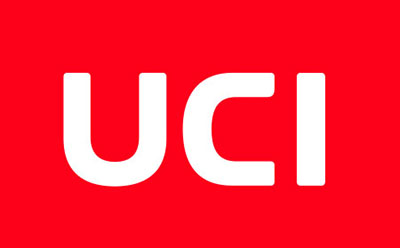
logo标志设计一家企业品牌形象的灵魂,传递品牌核心价值,是传播和记忆的重要元素,标志设计本身就是超级符号。如何了解“外国城市标志设计”市场价值,实现企业标志设计呈现,本文是帮助企业快速了解市场,了解“外国城市标志设计”的问题。
外国城市标志设计是一个城市形象的重要组成部分,它能够准确传达城市的特色和精神。一个优秀的外国城市标志设计,既要具备艺术美感,又要体现城市的文化底蕴。通过外国城市标志设计,我们可以了解一个城市的历史、文化和发展方向。
首先,外国城市标志设计需要具备独特性。每个城市都有其独特的地理位置、气候条件和历史背景。这些特点应该在城市标志的设计中得以体现,让人们一眼就能认出这个城市的特色。例如,巴黎的标志设计中有着明显的埃菲尔铁塔和塞纳河的元素,让人们联想到巴黎的浪漫与艺术;纽约的标志设计则以自由女神像和大都会博物馆为主要元素,展现了纽约激情四溢的现代城市形象。
其次,外国城市标志设计要符合当地的文化氛围。一个城市的文化底蕴是其标志设计最重要的灵感来源。例如,伦敦的城市标志中融入了英国皇室的象征——皇冠,体现了英国的历史底蕴与王权地位。而悉尼的城市标志则以一只飞舞的袋鼠为主要元素,展现了澳大利亚的野生动物和自然景观。
然后,外国城市标志设计需要有较高的辨识度。标志设计的最终目的是让人们能够一眼识别并与城市产生关联。因此,外国城市标志设计应该简洁、明确、易于理解。例如,伦敦的标志中只有一个红色的巴士,让人们在瞬间认出这是伦敦;东京的标志设计则融入了富士山的形状,清晰明了地表达了这个城市的地理位置。
最后,外国城市标志设计应该符合时代潮流。随着社会的发展,设计风格也在不断演变。优秀的外国城市标志设计应该与时俱进,融入当代的艺术元素和创意思维。例如,巴塞罗那的城市标志设计中融入了现代建筑的抽象元素,展现了这个城市的现代与活力;米兰的城市标志则以时装元素为主,体现了意大利时装之都的独特魅力。
总之,外国城市标志设计是一个城市形象传播的重要媒介。一个优秀的外国城市标志设计能够准确传达城市的特色和精神,让人们对这个城市有更深入的了解和感受。一个独特、文化氛围浓厚、易于辨识且符合时代潮流的标志设计,将有助于提升城市的知名度和形象,吸引更多的人们到这个城市旅游、投资和生活。因此,外国城市标志设计的重要性不容忽视,并且需要借助设计师的巧思和创造力,将一个城市独有的魅力通过标志设计展现给世界。
根据对“外国城市标志设计”的了解,深圳vi设计公司认为一个好的标志设计,应该具有清晰、简洁、专属化和容易识别记忆的特征,通过独特差异化的形象,让消费者记住并且喜欢,从而实现购买或者合作。良好的标志设计令人记忆深刻、内涵丰富。

In the realm of urban planning, the design of city signage plays a crucial role in portraying the identity and characteristics of a place. The evolution of foreign city signage design has a fascinating history that is deeply rooted in the development of various industries.
One of the earliest examples of foreign city signage design dates back to the industrial revolution. As factories emerged and urbanization accelerated, cities needed a clear and efficient way to guide visitors and locals alike. Signage became an essential tool for navigation and communication. At this stage, the focus of signage design was primarily on functionality, with simple yet bold lettering and symbols.
Over time, as cities expanded and their economies grew, the need for more sophisticated signage designs became apparent. The rise of the tourism industry in the 20th century further fueled the demand for visually appealing and culturally reflective city signage. Cities recognized the importance of creating unique visual identities to attract visitors and showcase their distinctiveness.
With this shift, the concept of branding and marketing began to influence city signage design. In an increasingly competitive global landscape, cities started to incorporate elements of their local industries, cultural heritage, and natural landscapes into their signage. For example, a city known for its wine production might incorporate grape motifs in its signage design, while a coastal city might feature waves or seagulls.
The advent of technological advancements has revolutionized the field of foreign city signage design. From neon lights to digital displays, cities have embraced innovative solutions to make their signage more eye-catching and interactive.
Neon signs, popularized in the mid-20th century, became iconic symbols of bustling city life. The vibrant and colorful lights not only attracted attention but also added a touch of glamour and modernity. Many foreign cities, especially those known for their vibrant nightlife and entertainment scenes, still incorporate neon signage as part of their visual identity.
In recent years, the widespread use of digital displays has given city signage a new dimension. LED screens allow cities to display dynamic and customizable content, providing real-time information, advertisements, and even public art installations. These digital displays have become integral in creating a dynamic and interactive urban environment, captivating both locals and visitors.
Furthermore, advancements in augmented reality (AR) and virtual reality (VR) technologies are increasingly being integrated into city signage design. By overlaying digital information and immersive experiences onto physical signs, cities can offer enhanced navigation, historical tours, and interactive storytelling. This fusion of technology and design creates a unique and memorable experience for those exploring foreign cities.
When designing city signage for foreign locations, cultural considerations play a vital role in ensuring the message is effectively conveyed and received.
Understanding cultural symbols, colors, and iconography is essential to avoid misunderstandings or offense. For example, while red is commonly associated with luck and prosperity in many Asian countries, it may symbolize danger or warning in other cultures. Similarly, the use of religious or political symbols requires careful consideration to avoid controversy and respect diverse beliefs.
In addition to symbolism, language is another crucial aspect of foreign city signage design. Translations must be accurate, easily understandable, and culturally appropriate. A misinterpretation or mistranslation can lead to confusion or unintended meanings. Incorporating multilingual signage, especially in tourist-heavy areas, can greatly enhance the accessibility and inclusivity of a city.
By incorporating cultural considerations into signage design, foreign cities can effectively communicate their unique identity, foster a sense of belonging, and promote cultural exchange.
Looking ahead, foreign city signage design is poised to continue evolving, driven by technology, sustainability, and the quest for memorable experiences.
Sustainability is a growing consideration in all aspects of urban design, including signage. Cities are increasingly embracing eco-friendly materials and energy-efficient lighting solutions. The integration of renewable energy sources, such as solar-powered signage, aligns with the global shift towards sustainability and demonstrates a city's commitment to the environment.
Furthermore, the rise of smart cities and the Internet of Things (IoT) will likely have a significant impact on signage design. Connected signage can provide real-time data, such as transportation updates or event information, enhancing the overall urban experience. The integration of AI-powered personalization can also offer tailored recommendations and directions based on individual preferences.
As technology continues to evolve, virtual reality and augmented reality experiences will become even more prevalent in foreign city signage design. From interactive historical reconstructions to immersive art installations, these digital enhancements will provide visitors with a deeper understanding and connection to the city's heritage and culture.
In conclusion, foreign city signage design has come a long way from its functional origins. It has evolved into a powerful tool for shaping a city's identity, attracting tourists, and fostering cultural exchange. As technology advances and cultural sensitivity grows, the future holds limitless possibilities for creating stunning and meaningful city signage designs that reflect the essence of each location.
注意:本文“外国城市标志设计”由软件生成,仅供参考,本站不对内容的准确性很真实性负责。
